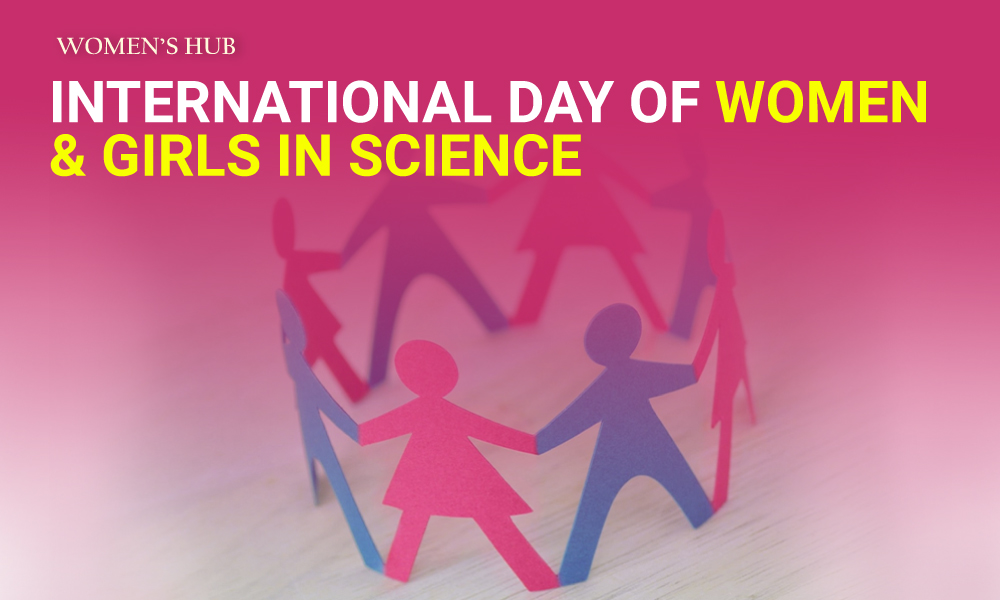“In order to achieve full and equal access to and participation in science for women & girls, & further achieve gender equality and the empowerment of women and girls, the United Nations General Assembly declared 11 February as the International Day of Women and Girls in Science in 2015.” This initiative is part of UNESCO and UN Women’s drive to push for increased participation of women and girls in STEM fields. (Science, Technology, Engineering and Mathematics) Every year focuses on a unique theme. The theme for 2022 was “Equity, Diversity and Inclusion: Water Unites Us”. It highlighted the role of women in science and technology in solving waterrelated challenges, including social sciences, the private sector, diplomacy, & the international arena, etc.
There is a wide gender gap in STEM fields globally, despite the general phenomenon of girls academically outperforming boys in school. According to un.org, “Women are typically given smaller research grants than their male colleagues and, while they represent 33.3% of all researchers, only 12% of members of national science academies are women. In cutting-edge fields such as artificial intelligence, only one in five professionals (22%) is a woman. Despite a shortage of skills in most of the technological fields driving the Fourth Industrial Revolution, women still account for only 28% of engineering graduates and 40% of graduates in computer science and informatics.”
From France to India to Iran to Afghanistan, oppressive government authorities and extremists of all hues are equally complicit in obstructing the educational progress of girl students and young women. Whether it’s revoking scholarships, penalising them for their sartorial choices or religious beliefs, or just plain banning them from universities altogether, women’s education is in crisis all over the world.
All the girls and women from these nations have proved themselves exceptionally and achieved distinctions in various academic fields, exposing the insecurity of the powers that seek to hold them back. Women are also among the hardest-hit from the fallout of climate change as well as economic crises. In view of all these things, encouraging women’s participation in the field of education is very important; particularly in STEM. Women bring unique perspectives that lead to enrichment and advancement in the existing repository of knowledge. Educated and enlightened women become assets for society and elevate the intellectual, moral and spiritual essence of civilization at large.
Historically, this has always been the case. From the Greeks to the Arabs to Africa to Asia, women scientists, doctors, nurses, mathematicians, etc. laid the foundations of various modern sciences like astronomy, medical sciences, natural sciences, engineering, etc.
Rufaydah al-Aslamiyyah, Sutayta Al-Mahâmali, Labana of Cordoba, Mariam al-Astrulabi or Al-’Ijliyah, Hypatia, Margaret Cavendish, Laura Bassi, Lady Mary Wortley Montagu, Ada Lovelace, Florence Nightingale, Chien- Shiung Wu, Maryam Mirzakhani, Shakuntala Devi, Jane Goodall, and so many countless others. If scientific progress is a vast brilliant sky, then these are among the stars that illuminate it.
A Bahujan scholar quotes, “There were no Aryabhatta or Varahmihira…the first Indian to work on mathematics was the Bahujan woman who planted rice sapling in rows.”
As we know, gender is never an isolated category, it is always racialized, and/or caste-driven and classed. What is the caste and class character of women in STEM fields today? Is the representation of women in STEM institutions truly representative of all women or only of women with enough socioeconomic privileges? Isn’t it a sad reality that particular women are able to “break the glass ceiling” while other women are left to sweep and mop the broken pieces after? When we call for increased participation of women in STEM, we need to ensure that there is substantial equality, i.e. particular focus should be on women from marginalised backgrounds. Not just so that there is an adequate representation or even merely that they act as conduits of progress for their respective communities, breaking the cycle of poverty and all that. More importantly, so that humanity is not deprived of the gifts and talents of exceptional people simply due to preventable circumstances like poverty, discrimination, structural violence, capitalist corporatisation of education systems, etc.
A famous Muslim scholar once expressed his criticism of those who discourage or deny women from pursuing education, comparing it to the pre-Islamic practice of burying baby girls alive.
In a world where misogyny and sexism are being reinforced daily, rather than abating, this day is an important reminder of the contributions of women to humanity.
In social media discourses, a favourite talking point of misogynists is the logically fallacious statement, “All the civilizational and technological progress has been done by men.”
Those who perpetuate this idea only expose their own alarming lack of awareness about the immense contributions to women in all fields of human endeavour. The extent of advancement in the modern world today- from the launch of the largest ever space telescope (James Webb) mission to the simple day-today logistics of labour – all of it stands upon the labour and contributions of both intellectual women and men, spanning thousands of years. To dismiss this all in order to capitulate to modern-day anxieties around gender discourse is simply to put one’s ignorance on full display.


0 Comments